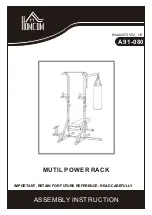
Appendix A - Determining Your Oil Pattern
400-294-002
Rev. Date: 01/07
A-7
•
If changing the buffing distance to your normal distance does not give you the oil
application you want at your test spot, experiment with other buffing distances.
•
If changing the buffing distance does not result in the amount of oil you want
applied in the test spot in the buffed area, consider changing the oiling distance.
A shorter oiling distance will result in less total oil being applied to the buffed
area; a longer oiling distance will result in more oil total being applied in the
buffed area. Refer to the Oil Taper information of this appendix for information
about how the oil is applied in the buffed area.
•
If changing the oiling distance is not an option or does not result in the amount of
oil you want applied to your test spot in the buffed area, consider changing the
wicking foams to change the amount of oil applied in the oiled area. A lower
amount of oil applied in the oiled area will result in less oil being applied to the
buffed area; a higher amount of oil will result in more oil being applied in the
buffed area.
•
If changing the amount of oil applied in the oiled area is not an option or does not
result in the amount of oil you want at your test spot in the buffed area, change
the buffer brush pressure. Changing the buffer brush pressure will not affect the
amount of oil applied in the oiled area, but it will increase the amount applied in
the buffed area. Keep in mind, though, that increasing the buffer brush pressure
will shorten the life of the buffer brush and put undue strain on the buffer motor.
For information about checking and changing the buffer brush pressure, refer to
the Maintenance section.
If the amount of oil in the oiled and buffed areas is different from the amount you want.
There are three things you can change: the distances, the wicking foams, and the buffer
brush pressure.
•
If the oiling and buffing distances are not what you normally use, change the
distances to those you normally oil and buff.
•
If using your normal distances does not create the oil output you want,
experiment with other distances for both oiling and buffing. For information about
how the distances affect the oil output pattern, refer to the Oil Taper information
in this appendix.
•
If changing the distances does not create the oil output you want, change the
wicking foams to ones with higher or lower output, as needed. For information
about the wicking foam output, refer to the Creating Oil Output Patterns
information in this appendix. For information about changing the wicking foams,
refer to the Maintenance section.
Содержание Express 294-115-200
Страница 2: ......
Страница 4: ...ii...
Страница 6: ...iv...
Страница 80: ...Troubleshooting 4 10 Rev Date 01 07 400 294 002 This page intentionally left blank...
Страница 83: ...Parts 400 294 002 Rev Date 01 07 5 3 MISCELLANEOUS...
Страница 85: ...Parts 400 294 002 Rev Date 01 07 5 5 294 115 116 Wiring Diagram...
Страница 87: ...Parts 400 294 002 Rev Date 01 07 5 7 FRAME and BODY...
Страница 107: ...Parts 400 294 002 Rev Date 01 07 5 27 VACHEAD and CLEANING...
Страница 117: ...Parts 400 294 002 Rev Date 01 07 5 37 CONDITIONING Oiling and Buffing...








































